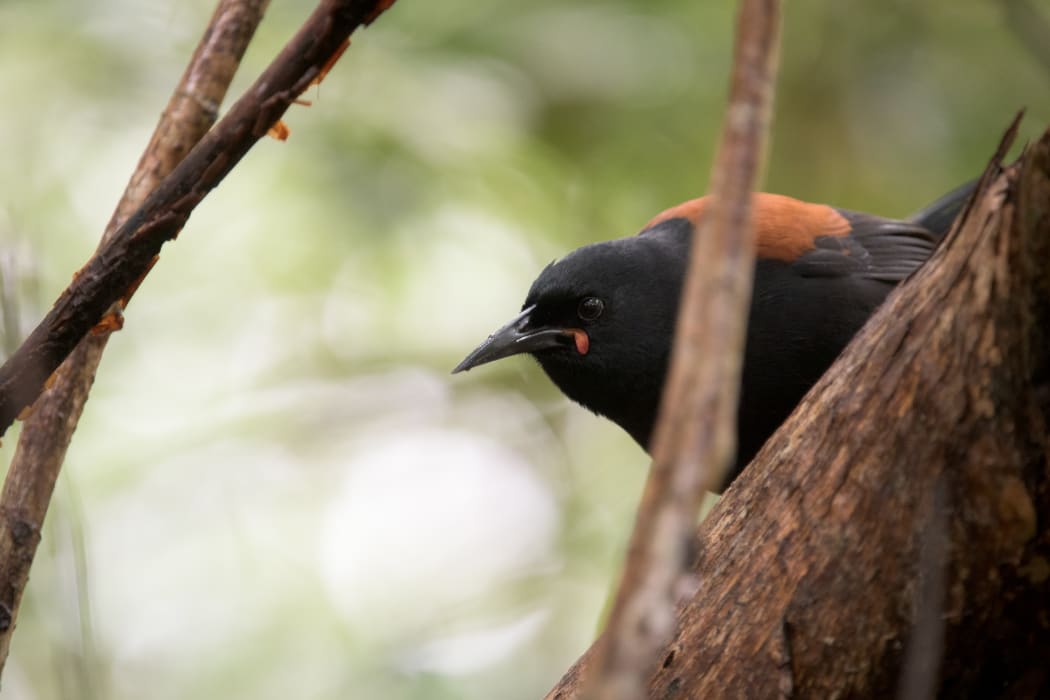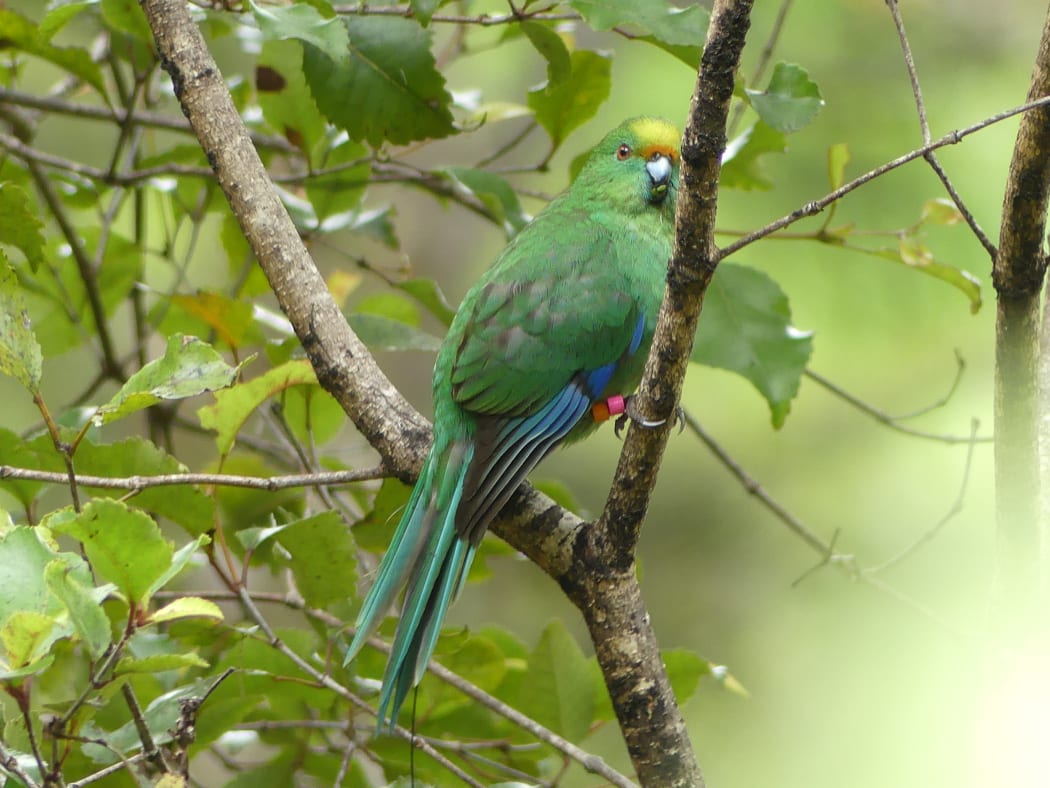Almost 20 years after the idea for a pest-free sanctuary was first raised for the site of Nelson's former water works in the Brook Waimārama Sanctuary, the first two species to be reintroduced are establishing themselves in the reserve.

Adult tīeke in Brook Waimārama Sanctuary. Photo: Supplied / Leon Berard
The South Island saddleback, or tīeke, was introduced to the sanctuary in April, followed by the orange-crowned parakeet also known as the kākāriki karaka, in November.
Sanctuary ecologist Robert Schadewinkel was out in the reserve looking for tīeke nests in December, when he spotted a pair flying in and out of some dense bush.
"Sure enough after an hour, I saw this little fledgling emerging out of the undergrowth, so I didn't find a nest, but I found the product of a nest," Schadewinkel said.
"It's a really great surprise and it basically signifies the first breeding of South Island tīeke in the top of the South Island in at least 120 years."
The 700-hectare fenced sanctuary encompasses beech forest on the fringe of central Nelson.
Schadewinkel said tīeke were notoriously difficult to spot and they were unsure how many of the 40 birds released in April had settled in the sanctuary.
During a survey in September, 11 birds were observed and staff and volunteers plan to conduct another survey early in 2022.
As the rare wattlebirds adjust to their new home, so do another species. In November, 20 rare kākāriki karaka were also released into the sanctuary.

Kākāriki karaka - Orange Fronted Parakeet or Cyanoramphus malherbi - in Brook Waimārama Sanctuary. Photo: Supplied / Deb Corbett
Schadewinkel said the birds were critically endangered, second only to the kākāpō. It is estimated there are around 360 birds left in the wild, making it the rarest mainland forest bird in Aotearoa.
The kākāriki were raised at The Isaac Conservation and Wildlife Trust facilities in Christchurch.
Department of Conservation kākāriki karaka operations manager Wayne Beggs said the transfer of birds into the Brook Waimārama Sanctuary was a significant step forward and reflected the hard work of those involved in the species recovery programme.
"The wild kākāriki karaka population is limited to a few Canterbury alpine valleys and an island in the Marlborough Sounds, so establishing new safe sites for this fragile species is vital."
Along with boosting the parrots' population, Beggs said having birds at the sanctuary was also an insurance policy of sorts if anything were to happen to the orange-fronted parakeets at other sites.
"Kākāriki karaka are highly vulnerable to predators like rats and stoats and their populations can be seriously impacted during years when the beech trees mast, or seed heavily, and predator numbers skyrocket."
Department of Conservation staff and sanctuary staff have been able to monitor the birds via small tail-mounted transmitters since their release.
Schadewinkel said kākāriki were known to be prolific breeders once they got started and in December, some of the birds were observed feeding and looking for potential nesting sites.
He said 2021 had been a game changer for the sanctuary.
"We went from the process of fundraising for the fence, to building the fence and then to removing all the pest species and then to demonstrating to our partners, iwi and the Department of Conservation that we can maintain the sanctuary pest free and that we are capable of dealing to incursions when they do occur and now finally, we can reap the rewards."
It is hoped many more species will be reintroduced into the sanctuary in the coming years. Kākā, tuatara and powelliphanta - large carnivorous land snails - are also on the list.


